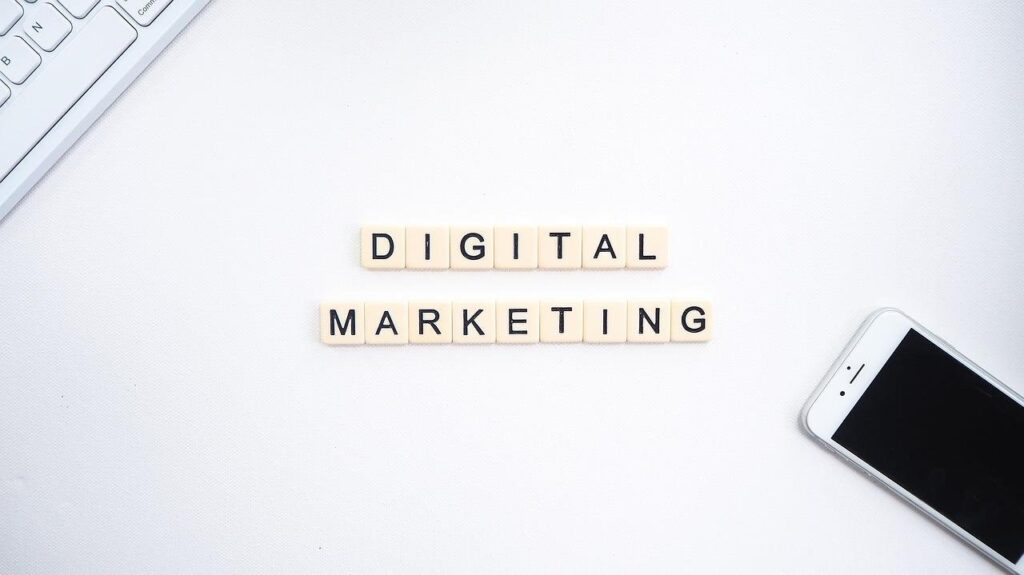In the present day, there’s almost nothing possible in the world without the Internet. At least 4.5 billion people have access to the Internet and the web is also a major source for sharing and spreading information.
Also, the online way of doing things has affected many sectors, even the ways that businesses sell their products and services. Now, for effective marketing, you have to involve the web. Billboards, cold calls and print ads are becoming replaced by website creation, social media and online ads.
In this article, you’ll find out what digital marketing is and how it can help your brand in Connecticut. You’ll also discover the types of digital marketing so you can understand the one that fits your business.
What is Digital Marketing?
Digital marketing is the use of digital tools or channels to sell a product or service. The aim of this is to reach out to customers on the place where they spend most of their time which is the internet.
Digital marketing is a wide practice because many online channels are waiting to be used. Posting your products and services on social media is a form of digital marketing, the same applies to email marketing and blogging. It doesn’t matter the kind of product or services you provide, so long as you properly incorporate the internet, it will thrive.
Benefits of Digital Marketing
Every company, it doesn’t matter the size, whether large scale, small scale or International organisation can benefit from putting themselves out online. Check out some ways that digital marketing can be of benefit to your business:
- Building brand awareness by establishing your online presence.
- Engaging potential customers and gathering massive leads.
- Building a trustworthy and reliable bond between you and your customers.
- Directing customers through the right marketing funnel from their first contact with you to the point of sale.
Types of Digital Marketing
Digital marketing consists of different practices. While there may seem to be a lot, you don’t need to incorporate every single practice into your business. However, you should get familiar with each of them so you can have a better knowledge of which marketing strategy will suit your business.
- Search engine optimization (SEO)
SEO can be considered the foundational element of digital marketing. Incorporating this practice into your business means optimizing your website to top search engine result pages. When your website ranks, you have increased online visibility and a higher chance of potential customers clicking your link.
You can optimize your website for SEO in three major ways:
- On-page SEO: This one involves incorporating the right keywords into your content and making sure your content is unique.
- Off-Page SEO: This one involves relating with other websites through backlinks or guest blogging.
- Technical SEO: This deals with optimising the backend of your website. These elements include coding, image compression, structured data and more.
- Content marketing
Content marketing is closely related to SEO marketing. It’s also an important part of digital marketing. This involves creating content to create brand awareness, driving massive traffic and generating quality leads.
Content creation can come in different forms including:
- Blog posts: Writing blog posts and incorporating the right keywords is a good way to engage and bring massive traffic to your site.
- Videos: Website content can also be in video form; adding videos related to your business on your website is a form of content marketing.
- Podcasts: This is another form of content creation that helps you build a connection between you and your audience. To begin, you can start by turning your existing contents into audio form.
- Ebooks and whitepapers.
- Infographics.
- Webinars.
- Social media marketing
Social Media Marketing is another significant type of digital marketing strategy. This deals with posting information about your brand or business on your social media channels to improve brand awareness. You can achieve this by posting content on social media channels like:
- YouTube
Your posts could be anything from informational blog articles to videos featuring your products or services. Before leveraging this strategy, ensure you make your research on which channel your target audience is more active. You have to study their demographics(age and location) as well as what interests them.
- Pay per click (PPC)
Some digital marketing strategies draw traffic to your site organically such as SEO and social media marketing. This means you don’t have to pay any dime meanwhile other practices come with a fee.
PPC is an abbreviation for pay per click; this is a paid form of online advertising. It’s similar to how SEO works, but PPC is a type of search engine marketing. If you’ve ever seen posts with the “Ad” label on them when you’re searching the net, then you’ve already come across PPC.
So, to use this method, you have to pay a fee for the times your links are put up for advertisement. The main goal is to generate leads for your business and make sales too.
- Native advertising
Native advertising is a type of digital marketing strategy. But this one doesn’t work the same way as normal pop-ups and intrusive ads. Native ads often blend in on websites and they advertise contents that are in alignment with surrounding articles and blog posts. For instance, native advertising could appear in the form of a video that’s incorporated into a blog post, or it could be a recommended reading at the end of the page.
The goal of native advertising is to direct users to click on content that takes them to your company’s page. If the advertised content is in alignment with the material users are currently reading, then they may be more convinced to click your link.
- Affiliate marketing
Affiliate marketing is a form of digital marketing strategy whereby one party or a brand gets a commission for selling someone else’s products or services.
According to the affiliate marketing model, a company provides that affiliate with a special link, which often leads to a page to purchase their product. The affiliate in turn makes a post about that product(mainly on their blog or social media) to promote the given link in their content. Whenever users click on the link to get a product, both the brand and the affiliate benefit. The company sells a product and the affiliate gets his due commission for that sale.
- Influencer marketing
This practice has some similarities to affiliate marketing in the sense that it involves another individual promoting a brand, especially on social media or within a blog. But unlike affiliates, influencers get their money for just promoting the brand’s product whether or not the brand makes any sale.
Influencer marketing is effective because it helps brands target a specific audience especially when that influencer is popular among their fans. They can influence their followers’ buying decisions by recommending that product.
For business, it’s best to choose influencers whose audiences align with your kind of products and services. For instance, a company selling short wear will benefit more from partnering with a popularly known athlete. In the same vein, a brand selling cosmetics would be better working with a beauty influencer.
- Email marketing
When you check your email box right this instant, you may find different branded emails sitting there, some opened and some unopened. Email marketing is a digital marketing strategy that involves communicating with your target audience through emails to improve engagements, sell your products and drive conversion and sales. There are three different types of marketing emails that you can send to your customers, they include:
- Email campaigns promote products, encourage people to sign up for a product or service, or provide special offers or coupons.
- Email newsletters are sent to subscribers regularly. It’s a means of keeping them updated on what’s going on with your brand.
- Automated marketing: These are automatically sent based on established triggers and they include birthday emails, reminder emails, and welcome emails.
You can use Wix Email marketing for your email campaigns, automation and newsletters. This platform is useful because it monitors statistics on email opens, views and clicks; this ensures that you know how well your business is doing. It also allows you to design your emails so that it gives a different vibe and feel that only your brand can give.
- Mobile Marketing
Sometimes marketers focus on converting their customers through their laptops while ignoring the significance of a smaller device; the smartphone. This is very essential considering that over 50% of active Internet users access the internet from their mobile phones.
Mobile marketing involves incorporating standard digital marketing practices fitting the mobile experience. It involves:
- Optimizing your mobile page speed:
Google ranks pages using page speed as a ranking factor for both mobile and desktop. Also, mobile users are always on the go and won’t appreciate a slow site. So, improve the speed of your website for a better user experience.
- Designing your website for mobile:
Your site is the face of your business, it displays your products and services and determines whether people buy or not. The way your website appears on a mobile determines whether your audience will convert or not.


